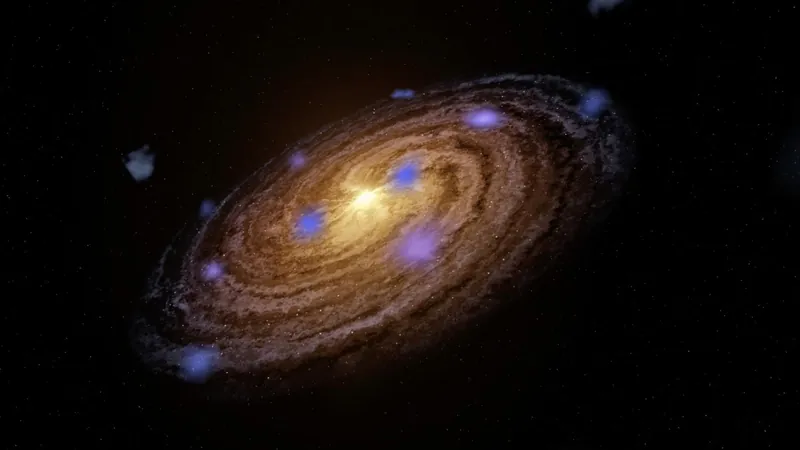
Revolutionary Discovery: Massive Stars in Metal-Poor Galaxies Have Companions!
2025-09-02
Author: Arjun
Astounding New Findings from the Cosmos
In a groundbreaking study that has sent shockwaves through the astronomical community, a global team of 70 scientists reveals that massive stars in metal-poor galaxies often come with partners. This research, spearheaded by experts from Belgium, the Netherlands, and Israel, is documented in the prestigious journal Nature Astronomy.
Binary Star Systems: Nature’s Dynamic Duo
For the last 20 years, astronomers have recognized that many massive stars in our own metal-rich Milky Way galaxy are part of binary systems, a phenomenon crucial to their evolution. Until now, however, the existence of such pairs in metal-poor galaxies remained shrouded in uncertainty. This new research has conclusively shown that, like their Milky Way counterparts, giant stars in areas with lower metal content also have companions.
Unlocking Cosmic Secrets: The Role of the Small Magellanic Cloud
Hugues Sana from KU Leuven describes their revolutionary approach by likening the Small Magellanic Cloud (SMC) to a cosmic time machine. This nearby dwarf galaxy mirrors the conditions of distant galaxies from when the universe was just a few billion years old, providing a perfect backdrop for studying the life and interactions of massive stars.
The Challenges of Cosmic Observation
Observing massive stars beyond our Milky Way poses significant challenges due to their immense distances and faint emissions. The team utilized the state-of-the-art FLAMES spectrograph on the European Southern Observatory's Very Large Telescope in Chile, one of the largest telescopes on Earth. This sophisticated instrument, equipped with 132 fiber optics, allows for simultaneous observations of multiple stars.
A Star-Studded Revelation: Evidence of Stellar Partners
During an intensive observation period spanning three months, researchers monitored the movements of 139 massive O-type stars at various times, revealing their acceleration and deceleration patterns. These luminous giants, boasting masses 15 to 60 times that of our Sun, shine brightly until they culminate their existence in spectacular supernovae. Astonishingly, over 70% of the observed stars showed signs of having nearby companions.
Implications for Cosmic History: What This Means for Early Stars
Julia Bodensteiner, a co-author from the University of Amsterdam, emphasizes the implications of these findings: "The fact that massive stars in the Small Magellanic Cloud have partners suggests that the first stars in the universe, which we suspect were also massive, likely had companions too." This revelation could mean that some of these early stellar systems eventually evolved into pairs of black holes orbiting one another—not just captivating, but potentially hinting at the mysterious origins of our universe!



 Brasil (PT)
Brasil (PT)
 Canada (EN)
Canada (EN)
 Chile (ES)
Chile (ES)
 Česko (CS)
Česko (CS)
 대한민국 (KO)
대한민국 (KO)
 España (ES)
España (ES)
 France (FR)
France (FR)
 Hong Kong (EN)
Hong Kong (EN)
 Italia (IT)
Italia (IT)
 日本 (JA)
日本 (JA)
 Magyarország (HU)
Magyarország (HU)
 Norge (NO)
Norge (NO)
 Polska (PL)
Polska (PL)
 Schweiz (DE)
Schweiz (DE)
 Singapore (EN)
Singapore (EN)
 Sverige (SV)
Sverige (SV)
 Suomi (FI)
Suomi (FI)
 Türkiye (TR)
Türkiye (TR)
 الإمارات العربية المتحدة (AR)
الإمارات العربية المتحدة (AR)